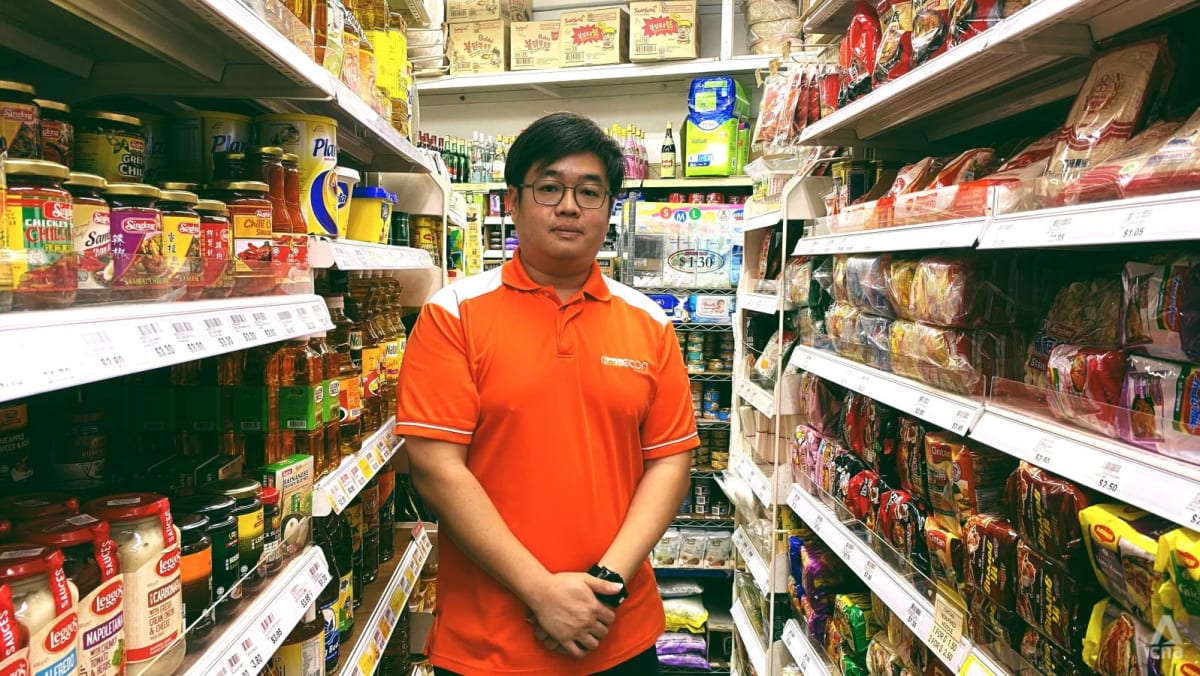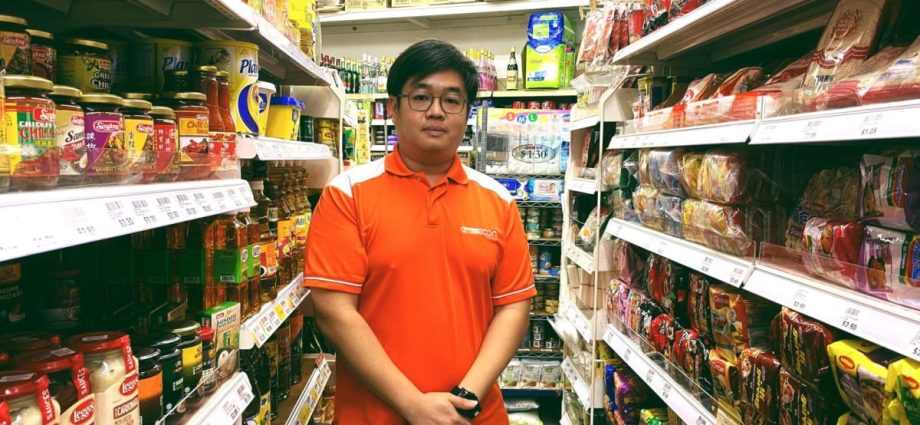
LOCATION, DIFFERENTIATING FACTOR
Despite the prevailing challenges, owners are adamant that minimarts have a place in Singapore society because they “supplement” supermarkets, which don’t cover all areas. So, many are ready to fight to keep theirs.
Mr Tan, whose minimart lies within the mature estate of Chong Pang in Yishun, said it is partly due to the elderly who are “unable to travel out of their convenient (zone)” that his store remains standing. That, and a nearby bigger supermarket that shut down.
To help her business stand out, Ms Nilima gets her staff to deliver goods to customers who are living nearby. “Even one item, they will also deliver,” she said. She also stocks up on daily necessities, so “if customers need it in the middle of the night, they can just come and buy”.
With many Singaporeans familiar with supermarkets, success depends on location – which is “very critical” – and creating a differentiating factor, noted Assistant Professor Charlene Chen, a social and consumer psychologist from Nanyang Technological University.
“If you’re lucky, you’re located where there’s not much competition. Strategically, some are close to schools, so kids can drop by after class. If you’re in a location where you have steady flow of clientele and traffic, then you’re protected from bigger external forces.”
The COVID-19 pandemic and rising prices due to inflation, for example, would hit a single minimart harder than a supermarket chain which can “ride over tough patches”, she said.
As such, minimarts that “survive a longer time” may have managed to “plug themselves” into an area not served by a larger supermarket. They have “already established their presence” and are “familiar faces” to residents in the area.
A good location, however, might be insufficient when a supermarket “pops up nearby”, or when they have “supply issues” and customers turn to supermarkets to get certain products, Asst Prof Chen cautioned.
Additionally, minimarts typically do not enjoy large economies of scale like supermarkets, pushing their prices higher. Customers who are on the hunt for cheaper products, as well as greater variety, would turn to supermarkets, she said.
And the “shopping goal is different” for a minimart customer, she added. She visits the provision store in her estate when she wants to “grab a couple of things I’m missing”, including dry goods that the supermarket might not sell.
Supermarkets, on the other hand, tend to have loyalty reward programmes which minimarts don’t, she noted. “If I’m attracted by these prizes and potential gifts, then I might shop at a supermarket.”
Asst Prof Chen nonetheless pointed to “interesting vending machines and pop-ups” that she has spotted at minimarts to attract customers to the store. These “nostalgic” features give people “an incentive to stop by and buy something “that can’t be bought from the supermarket”.
“Whatever business you’re in, it’s important to differentiate yourself from competitors – as long as there’s some kind of footfall,” she said.
While such strategies might be necessary today, first-generation minimart owners who are still in business “earned their first pot of gold” through their minimart, Mr Tan pointed out. “But in this day and age, we’re just managing costs.”
His minimart has been a family business since he was Primary 5 and he “can’t bear” to let it go. In fact, even when he met his wife, he mentally prepared her – he would work here “for (the rest of) my life” unless his parents decide to give up the business.
“I told her I have never given up hope on this business, and I will never give it up unless the situation has to change,” he said.

